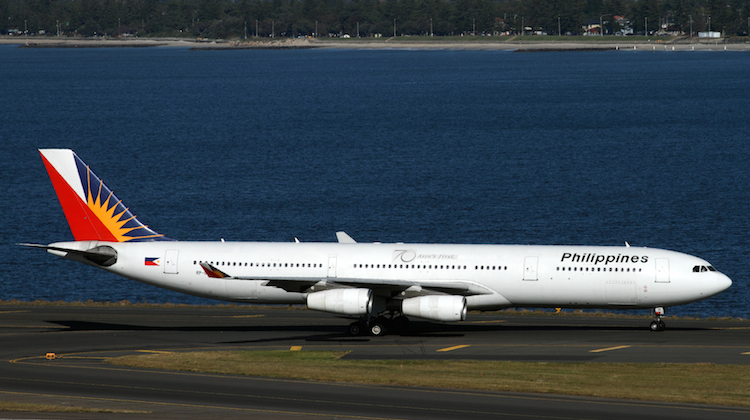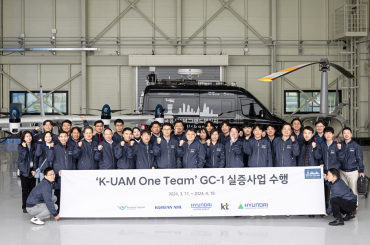
Philippine Airlines will end flights to Auckland via Cairns from December in favour of a nonstop service to New Zealand’s largest city.
The new nonstop Manila-Auckland route will be served with Airbus A340-300s featuring 254 seats spread across 36 in business and 218 in economy.
Taking off from December 6 2017, the flights will operate three times a week, with PR218 an overnight service from Manila and the reciprocal PR219 departing Auckland in the early afternoon.
As as consequence of launching nonstop flights to Auckland, Philippine Airlines said it would end the current Manila-Cairns-Auckland service, which began in 2015 and is served with 156-seat Airbus A320 narrowbodies.
The airline said those with tickets on Manila-Cairns for travel after December 6 would be offered the chance to rebook their flights on another of Philippine Airlines’ Australian routes or offered a refund.
Meanwhile, travellers holding tickets for Cairns-Auckland would be transferred onto another carrier, while passengers booked to travel between Auckland and Manila via Cairns would be accommodated on the new nonstop service.
Philippine Airlines will be the only airline to offer a nonstop option between the Philippines and New Zealand.
The end of flights to Cairns will reduce Philippine Airlines’ Australian network to four destinations – Brisbane via Darwin and nonstop flights to Melbourne and Sydney.
A further shakeup to its services in this part of the world may be on the cards in 2018 when Philippine Airlines takes delivery of the Airbus A321neo.
The long-range narrowbody could allow Philippine Airlines to decouple the Manila-Darwin-Brisbane service and offer nonstop flights to the Queensland capital.
“That will happen in 2018 when we take delivery of the A321neoLR, the one with additional centre tanks,” Philippine Airlines president and chief operating officer Jaime Bautista told Australian Aviation in an interview in late 2016.
The Airbus website lists PAL as having orders for 21 A321neo aircraft, without breaking down the order into A321neo and A321neoLR variants.
The A321neoLR has a typical range of 4,000nm, while Brisbane-Manila measures 3,125nm, according to the Great Circle Mapper.
In May 2015, the governments of Australia and Philippines agreed to an expansion of the bilateral air services agreement that lifted the number of seats available for Filipino carriers operating to the four major Australian gateways of Brisbane, Melbourne, Perth and Sydney to 9,300 seats per week.
In April 2016, Air New Zealand signalled an intention to serve Manila from its Auckland hub but shelved those plans a few months later, citing “administrative delays”.











Lechuga
says:I’m surprised the A340 doesn’t fly down to Melbourne, especially in the summer.
Guy David
says:The furnished A330-300 with 309 seats is way better than A340-300 of PAl u should be happy bec it a permanent aircraft starting this year
GBRGB
says:Not surprising, the flights out of Cairns to Manila in particular were very expensive, to Auckland a little better value as there is competition on that route, not good still to lose capacity into our regional areas.
Jon
says:Come on PAL when are we going to see direct flights Brisbane – Manila.
Teddy
says:@GBRGB
You’re right – it’s not good to lose capacity from regional areas.
The market is there but like every other location including the capitals, regional centres are justifiably price sensitive.
Again it reinforces that there is an aircraft gap that would enable these longer thinner routes to be profitable & viable. Unfortunately what pax really want from the manufacturers is a modern equivalent that combines A310 widebody capacity with B757 intercontinental reach – a widebody intercontinental aircraft that fits a relatively low 200 pax in a 2-3 class layout. A widebody would seem to be essential for the 4500+ km sector.
With modern construction and materials it would seem to be a far more profitable potential market than in years gone – but probably not enough to coax manufacturer development. The manufacturers and airlines probably don’t want it (even if there is a huge number of untapped potential routes), despite the fact that pax certainly do.
Oskar James Clare
says:@Jon PAL have all but confirmed that they will go non-stop on the MNL-BNE flight probably from next year when they receive their A321LR. This may or may not mean the end of Darwin services.
Will
says:@Teddy
You’ve pretty much described the 787-8…
Teddy
says:@Will
The 787-8 is still too big – 3 class low density is close to 230 pax. Strip out another 30-40 seats (2-3 frames of physical airframe size) and you get the aircraft capacity required.
It makes for a short-body stubby aircraft – but that’s the physical size required for these longer thinner routes. It would be taking over the B752 markets and competing with A321LR NEO.
A wide body will always win favour with pax, and may serve the pallet freight market more effectively.
random
says:@Teddy
What you’re talking about there is basically a B762 sized aircraft.
Most 3 class B762 had around 160-70 seats, with 4-5 abreast in first, 5-6 abreast in business, & 7 abreast (2-3-2) economy.
@ Will
Obviously B762 is old technology, and the B787-8 is new, but putting that obvious difference aside, dimensions like cabin width are also vastly different – so the B787-8 isn’t really a valid choice.
The B787 has an internal cabin width of 18 feet (5.49m) versus B767 internal width of 15 feet 6 inches (4.72m) – a huge difference when trying to physically scale down a wide-body into the lowest end of the market. A 3 class 787-8 has 9 abreast economy and 280 pax in 3 class seating – still far too big for what @Teddy is suggesting.
The problem would appear to be that the manufacturing market (basically Airbus & Boeing) seem to have temporarily abandoned aircraft in the B762/A310 size – either going larger into the A350/B787 class, or trying to upscale single-aisle aircraft in the A321/B737MAX class.
Rick Hawthorne
says:Lechuga. MNL-MEL-MNL has been serviced by A330s for quite some time (now tri-class configuration) with SYD being serviced by A340s all be it 7 days each week.
Over my last 3 trips MNL-CNS-MNL I’ve noticed the increasing pax loads with very few disembarking in CNS. Business is picking up so it was inevitable a bigger plane would be needed and the technical and traffic rights stop at CNS cease. However the 6 (ex Iberia) A340s in the fleet are scheduled for retirement starting at the end of 2018 so expect more changes. These planes, although very comfortable and quiet have no entertainment systems, so one needs to bring a iPad. At an average age of 17 years they are now nearing their third ‘D’ checks which would probably cost as much as the fuselage value and take a couple of months. Pricey cabin refurbishments would give only limited gains. New aircraft, including A350s and two more 777s are scheduled.
Rick Hawthorne
says:Meant to add MNL-SYD return are now being serviced by A330s with tri-class configuration as of mid August. Premium Economy should do well although there are only 24 seats available